Ludmila KASTLER et Svetlana KRYLOSOVA
The History of a Conceptual Construct : New man / Soviet man
In the present article, we try to trace the genesis and the evolution of two correlated and closely connected concepts : New man and Soviet man. Our approach is to analyze the discursive contexts in which these two concepts circulate, to determine the relations between them as well as their links to other neighbouring concepts, and to identify their characteristic elements. Born at the crossroads of diverse discursive practices, the two concepts in question can be considered as a double concept which contains two representations, closely related to a single phenomenon. The multiple nuances of meaning of this single phenomenon place it at the reference level between reality on the one hand and modern mythology on the other. Being a hybrid product of the utopian dreams of several generations, it designates a new species, unique in its kind, namely homo sovieticus, an extraordinary phenomenon in the world history.
Catherine GÉRY
The “sovietisation” of the XIXth century legacy : the example of Nikolai Leskov
(Lady Macbeth of the Mtsensk District)
The posterity of Leskov’s novel Lady Macbeth of the Mtsensk District (1865) in the Soviet arts demonstrates the essential presence of the “classical” XXth century in the Soviet XXth century through adaptations. As a historic-cultural transfer involving various formal strategies, the adaptation may be an original creation especially since the different adaptations of the same text are likely to interact with each other. Any adaptation is at the same time a memory act and a gloss, a commentary and an exploitation of the object it refers to. That is why the textual, visual and musical remakes of Lady Macbeth of the Mtsensk District can provide very useful elements to understand the way Leskov was read and interpreted in the XXth century, as well as showing how the cultural heritages of the XIXth century was treated in the Soviet Russia, at a time when the spoken word was losing its supremacy in favour of the image as a new way of propagating common values (moral, cultural, identity) or, to use an overused word, as a new propaganda medium. It is also a means of circumventing censorship (political and sexual), and integrating it at the same time, obeying the doxa and sometimes unwittingly disputing its precepts, loving order in an ambivalent way while mistrusting the authorities that embody that order, canonizing and challenging models, which is revealed by the way in which Leskov adapts the story. This mechanism reveals a mapping of the cultural practices and their evolution through the XXth century in the USSR.
Natalia GAMALOVA
Classical Antiquity : to accept or to reject
This paper discusses the place of ancient Greek tragedies in the repertoires of Russian theatres in the period from 1917 to 1927. Immediately after the Russian Revolution, the new regime readily accepts to be compared to Athenian democracy ; the revolutionary zeal implies the Fervour of Aeschylus or the Glory of Pericles. In theatre, ancient tragedies were considered by playwrights and, especially, by directors (Sanin, Radlov, Tairov, Yuriev, Ferdinandov) to be inherent in drama experimentation. This paper critically examines theoretical works by Adrian Piotrovski, as well as his two expressionist plays The Fall of Helen Ley (1923) and The Death of the five (The Army Commander’s Death, 1925) as examples of the Ancient Greek theatrical tradition.
Véronique JOBERT
Manufacturing the Soviet, through daily family life
This article demonstrates, through an analysis of family letters, the extent to which the Soviet authorities went to manufacture the new Soviet man and woman. The letters in question were written between a noble women born in 1885 and living in Leningrad, and members of her family (her daughter, one of her sons, and three grand-daughters, all living in Manchuria). In total, 312 letters penned between 1927 and 1933 – a crucial period in Soviet history – are examined. In the first part of our article, we analyse the various ways in which the “Sovietisation” of everyday life took place in Russia. This includes the emergence of communal apartments, and the disappearance of basic foodstuffs from shops (together with the interminable queues that such shortages inevitably engendered). Then we go on to look at how the regime crushed all forms of resistance. The various means employed included selective food rationing, draconian working conditions, and arbitrary arrests and deportations. What emerges from our analysis of these letters is the fact the Soviet state interfered in every aspect of its citizens’ daily lives.
Michel NIQUEUX
The factory of new men (1935) by Alia Rachmanova
or the resistance to “new morality”
Alia Rachmanova (the pen name of Galina Dzhuragina, born in 1898 in Ural, died in 1991 in Switzerland) was expelled from the Soviet Union in 1925 after marrying an Austrian prisoner of war in 1921. Her autobiographical trilogy, translated into German by her husband and published first in 1931-1933 and then into many other languages, made her famous and turned her into one of the most popular Russian writers of her day (although she is not mentioned in most contemporary dictionaries). Her novel The Factory of New Men (Die Fabrik der neuen Menschen, Salzburg-Leipzig, 1935, published in French translation by Plon in 1936) received the prize of the French Academy for social education and mutual aid for “the best novel written, in any language, on the dangers of Bolshevism”. The novel describes, through several lives, the devastation of the “new morality” reduced to the sexuality of the “glass of water”, and the resistance of two young heroines to it. We shall compare this informed novel to other novels of the twenties on the “sexual question” (P. Romanov, S. Malashkin) and also to anti-utopias on the resistance to the “reforging” of the human being (E. Zamjatin’s We, M. Bulgakov’s Heart of a Dog).
Josette BOUVARD
The Bolshevo Labour Commune 1924 – 1938, or The construction of the New Man ?
The Commune was used for propaganda purposes both inside and outside the Soviet Union. It was claimed to be a successful model, offering a way to transform young criminals into good citizens, regenerating them through useful work. It was an open centre for young delinquents, paradoxically managed by the NKVD. As can be seen in interviews given by young activists in the Commune, it was an example of an open-entry, self-managed initiative seeking to reform young delinquents rather than punish them. The aim was to enable these young people to re-enter normal Soviet life as productive workers. The experiment was terminated terminated after the arrest of the NKVD chief Yagoda. The first director of the Commune, Pogrebinsky, committed suicide in the wake of Yagoda’s fall. In the Great Terror that followed, many of those involved in the Commune, staff and inmates, were executed or sent to the Gulag.
Lucie KEMPF
Theatrical avatars of the New Man
At the beginning of the 20th century, some theatrical utopias tell in advance the coming of a New Man on stage. Theatre appears then as the locus where this inner transformation of man will occur insofar as the country is literally struck by a « theatromania » that will improve after the revolution. These theatrical utopias rest upon two core notions : community (obščina, sobornaja obščina) and life consruction (žiznestroenie), the former being supported by V. Ivanov, the latter by N. Evreïnov. However distinct they may be, these utopias share a common feature : art stops being an end in itself and becomes a means for transforming life. After 1917, they will go on influencing Soviet theatre through three channels : the ideas of the Proletkult, particularly those of Keržencev, the cultural action of the Party through Lunačarsky and the avant-garde constructivist theories. Either before or after the Revolution, theatre in Russia aims at permeating the whole of life in a movement that revolves around the notion of community because it is the collective experience that forms the backbone of this genuine pan-theatricalism. If, after 1917, the expression kollektiv replaces obščina, it is because the factory has become the model of the ideal community in a country on its way to industrialization.
Marie-Christine AUTANT-MATHIEU
The Old Moscow Art Theatre’s re-education by the Proletarian playwrights
The Making of a new man, in art and culture, emerged against the figure of the intellectual with its humanism, tolerance and compassion towards the class enemy. In 1931, the Moscow Art Theatre is attacked for its excessively moderate repertory and is forced to stage the proletarian playwright Alexander Afinogenov whose play Fear (Strakh) (1931) is a perfect manual for rebuilding scientific and artistic circles : Professor Borodin, defeated by the arguments of the Bolshevik Klara, after being arrested, questioned, and released on condition that he renounces his work publicly, says at the end : “I accept your conditions”. Delighted with the success of the performance which places him among the most famous playwrights, Afinogenov would continue to propose his plays to Soviet theatres. But for him, too, history is moving forward. Suddenly he becomes a pariah. Through the notebooks he kept during the period of ostracism (April 1937-January 1938), one can follow the moods of a communist who remained believing, despite the difficulties, in the cause of socialism. Afinogenov’s diary shows biased thinking and writing, and self-censorship due to the birth of a new mentality. Disgrace is the test from the party (Providence) to test his faith. The man will be reborn purified after this initiation ritual.
Serge ROLET
Gorky and the training of young Soviet writers at the beginning of the 1930s
Gorky believed that Soviet literature was inadequately performing the role the Revolution had assigned it. It was not participating actively enough in the « construction » of socialism. Indeed, it was not reflecting (or rather, not reflecting very well) the « material » (i.e. the socialist society that the revolutionary proletariat was in the process of creating). The reasons for this collective failure were primarily writers’ ignorance, and their poor knowledge of Russian. The standard of literary language must be maintained, and popular expressions must be selected judiciously. Reflecting reality is a specific kind of task, distinct from ideology. Literature was also threatened by a certain petty bourgeois mentality, and by a selfish individualism and a harmful attachment to the past, which prevented writers from seeing the achievements of socialism. This damning diagnosis, and this defence of literature against interference by the political authorities, were themselves expressed in the extremist and simplistic discourse of political slogans.
Éric AUNOBLE
The making of a Soviet imaginary : the literary consultation of the magazine Komunarka Ukrainy (1932-1934)
As ideological discourses have often been studied, we intend to highlight the construction of the Soviet imaginary, through literary texts that were sent by readers for publication in the magazine Komunarka Ukrainy. The archives contain a hundred manuscripts and the reviews of them by the « literary consultation » of the editorial board. To understand the values, strategies and interactions of various actors in this vast literary game, we will present the magazine, study the profile of writers « from below » and their texts before considering their critique by the editorial board. Dealing with poetry and fiction in the cultural sphere, we nevertheless do not lose site of the key historical problems of Soviet society : adapting one’s prose to the Stalinist storytelling style means is synonymous with backing the regime itself.
Virginie SYMANIEC
The case of Ianka Kupala’s Paŭlinka (1882-1942) under « Nefed’s law » (1916-1999) or how to make Soviet plays from writings that are not
From 1939 to 1996, Vladimir Ivanovich Nefed (1916-1999) was one of the most powerful men in Belarusian theatre. His pen could determine success or social death. The history of the Belarusian Soviet theatre was written in his own image, dramatic texts rewritten and performances adapted to suit his views on what should be the « Soviet theatre » of Belarussia. In this paper, we illustrate the importance of the involvement of this man in « the Soviet factory of Arts and Culture » through a case study : the history of Paùlinka. This drama, written in 1912 by Ianka Kupala (1882-1942), was revised to suit Soviet ideology and to become a touchstone for all representations of Belarusian-ness, loyal to Soviet power. Pending further research to better clarify the identity of Vladimir Nefed, this case study seems to show, how one can produce a political aesthetic and a Soviet drama from a text that is anything but Soviet. It also shows how a man can rewrite the cultural history of a whole country to justify his own creation, stereotypes and ideas : a cultural history in which we continue to list, today, all the forgeries.
Frank GALI
Nikolaï Miaskovski, one of the pillars of Soviet symphonic music
Nikolaï Miaskovski, the “conscience of the musical Moscow”, is considered as the father of the Soviet symphonic music. An advocate of musical modernism, he was at the head of the Association for Contemporary Music (ASM) who competed with the Russian Association of Proletarian Musicians ( RAPM) for control of Soviet music in the 20s. Miaskovski, a shy, sensitive and introverted man was not the kind of composer the Revolution would like ; he reflects life not through the feelings and spirit of the masses, but through the prism of his personal feelings. A reviewer and composer, Miaskovski was appointed to teach composition for 30 years at the Moscow Conservatory and had as pupils Kabalevski, Khatchaturian, Khrennikov, Shebalin, etc. Miaskovski was honoured many times by the Soviet State and these awards and decorations gave the illusion of a successful and harmonious existence even though he was stung during the 20s and 30s by the many accusations in the Soviet press of individualism, decadence, pessimism and complexity and in 1948 by the Zhdanov’s decree against formalism. Miaskovski was not an active dissident, but his attitude and his resistance towards the Soviet regime transformed him into an inner exiled. A prolific composer, he left an output of eighty-seven published opera, symphonies, concertos and vocal works. The entire symphonic output of Miaskovski was recorded by Evgueni Svetlanov.
Juliette MILBACH
Arkady Alexandrovitch Plastov (Prislonikha 1893-1972), painter of the Russian rural tradition
After attending a religious school and a seminary in the Volga region, Plastov studied at the Stroganov and the Moscow School of Painting, Sculpture and Architecture. He became a renowned painter in the 1930s and received several distinctions for his work including the Stalin Prize in 1946 and two Orders of Lenin in 1963 and 1968. Soviet publications and teaching materials often included some of his most famous compositions as illustrations, such as A Feast in the Kolkhoz, A Fascist flew past, Spring, and The Traktorist’s Supper. While devoting most of his work to rural scenes in the Soviet era, Plastov seldom referred to political symbols in his paintings. The human figure is at the centre of his art. It is however far from the homo sovieticus we might expect : a peasant or a factory worker longing for progress and modernity. The characters are here painted in their traditional rural environment, toiling with ancestral tools, visually rooted in the nineteenth century Russian painting tradition and with elements of Christian iconography.
Anatoly TOKMAKOV
Ideological dressing in the writings of Nikolai Akimov
The director in the Soviet theatre is a person entrusted by the authorities with the mission to implement the party’s ideology. Once at the head of an institution, many talented artists found themselves in a situation where they had to choose between dogma and freedom, but most often sought a compromise. A form of compromise in which N. Akimov, director of the Leningrad Theatre of Comedy, excelled, was to present an unclassifiable work as a work of socialist realism, spreading in the press and specialized literature prolix arguments in a Soviet style whose purpose was to defend his work, and the work of his employees, against the inevitable ideological criticism. The text of Akimov from 1940 justifying the staging of « The Shadow » by Shwartz giving it the status of a « Soviet fairy story » is an excellent example of this art of disguise.
Fabien BELLAT
Soviet architects, or socialism with an almost human fac(ad)e
Visionaries convinced that they were inventing the world of the Revolution, prerevolutionary specialists adapting themselves to the new Soviet standards, courtiers surviving every political shift in the tide, professionals crushed by the fights between rival spheres of influence : if this description could apply to the members of the Politburo or the Writers Union, it also fits to the architects who defined the monumental appearance of the USSR.
So, although he designed the Lenin Mausoleum, Alekseï Chtchoussev was accused of being a “bourgeois exploiter ». A respected teacher, Ivan Zholtovski experienced many personal attacks because of his apolitical stance. Virulent opponents of the constructivists whom they pushed aside mercilessly, Arkadi Mordvinov and Karo Alabian seemed triumphant Macbeths of the Stalinist era – before they too were ostracized during the period of destalinization. Having worshipped Le Corbusier, modernists such as Andreï Burov and Nikolaï Kolli tried to erase their past, painfully preserving a place in the Soviet architectural world. After 1945, architects such as Evgueni Rozanov or Mikhaïl Posokhine seemed the perfect homo sovieticus : born at the same time as the Revolution, but raised with the Soviet bureaucracy, they were skilled in the art of political survival and the use of an increasingly artificial communist rhetoric – giving to the regime the illusion of imperial greatness.
Through these typical personalities, we can see how these professionals evolved, how they invented a Soviet way of being an architect – and how their ideological or aesthetic strategies had an impact on the architecture of the Soviet Union.
Katia GOLOUBINOVA-CENNET
The Ideal in the service of the ideology : the case of « How the Steel Was Tempered » by Nikolai Ostrovsky
The article concerns the history of this autobiographical novel which illustrates in a particularly fascinating way the principle of ideological commitment after the Revolution of 1917. Not only does Nikolaï Ostrovski’s cult text, the Soviets’ ideological Bible, illustrate the way in which the « new Soviet man » was constructed, it also has much to say about the principle of the personal commitment of a writer in the service of his people.
Cécile VAISSIÉ
Anatoly Surov’s Jewish ghostwriters during the campaign against « cosmopolitanism »
For historians of Soviet culture, Anatoly Surov is an extremely revealing phenomenon for at least two reasons. first of all, he played a key role in the persecutions, which were unleashed against “cosmopolitan” – that is to say, mainly, Jewish – theatre critics in 1948, during an explosion of State anti-Semitism. Second, he did not in fact write the six plays, that he signed between 1946 and 1953 and which earned him two Stalin Prizes, a considerable amount of money, a number of privileges and a prestigious position : he in fact used Jewish ghost writers, who were not fully consenting. As it turns out, there were many ghostwriters in the Soviet literature and dramaturgy. Surov’s case helps to understand, what kind of processes went on, and also to better understand the protections used and enjoyed by some members of the Soviet elite.
Alexandre BOURMEYSTER
Construction and de-construction by lying
This paper explores how the distinction between the term “lie” and “untrue”, “false” and “deception”. A. J. Greimas’s semiotic square and his “veridictory” modalities anable us to identify what is true, false, secret or untrue, and who speaks about the Soviet Union : the loyal communist, the anti-Soviet sympathiser, the specialist of the UdSSR or the duped revolutionary. The best witness for the prosecution is the one who, after breaking with the Soviet state, has not traded in his convictions for bourgeois opinions or for fascism – as he was always accused of by the Communists – but has persisted in defending the Truth. Such “Men of Midnight” include Boris Souvarine, the author of Staline, aperçu historique du bolchevisme (1935), Victor Serge and his Retour à l’Ouest : chroniques 1936-1940, and Ante Ciliga, author of Au Pays du Grand mensonge (1938). Living a lie leads to losing one’s own human dignity and self-respect. The Soviet regime destroyed the identity of its people, but created the Skaz, a formal Legend instilled into everybody’s mind. When it was accepted, the Skaz offered a protection, a kind of habeas corpus, a mask to shown to foreigners. Unfortunately, this art of lying has survived the Soviet Union, and many people today persist in lying in Russia through patriotism.
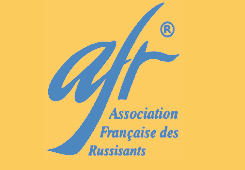
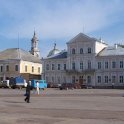

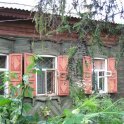




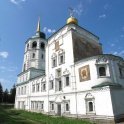




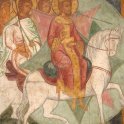
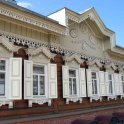

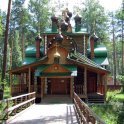
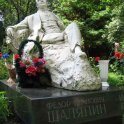



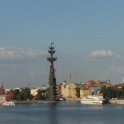

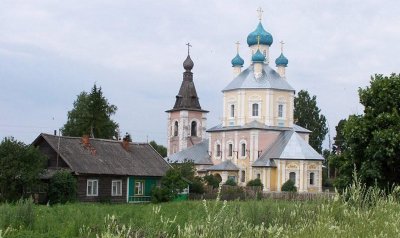
 Sommaire
Sommaire